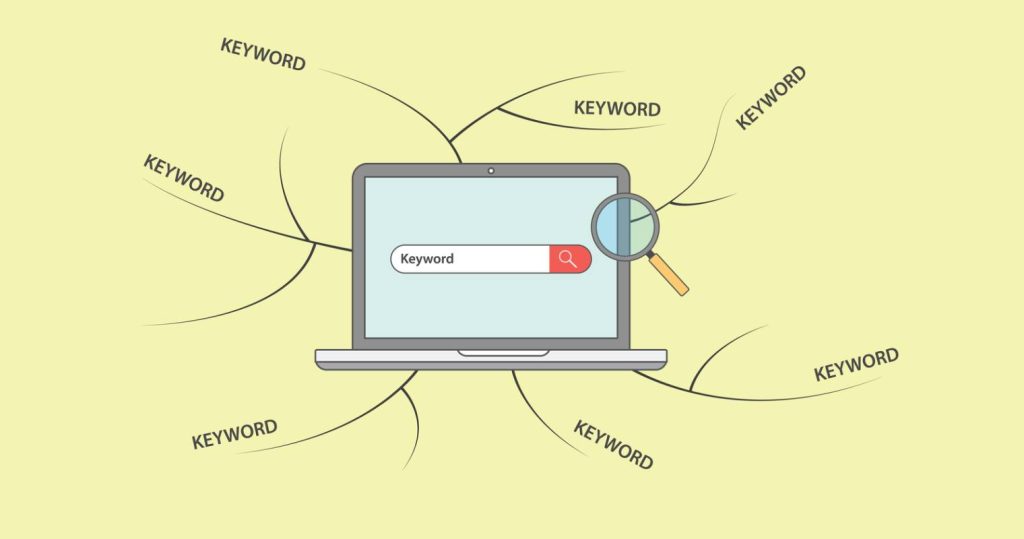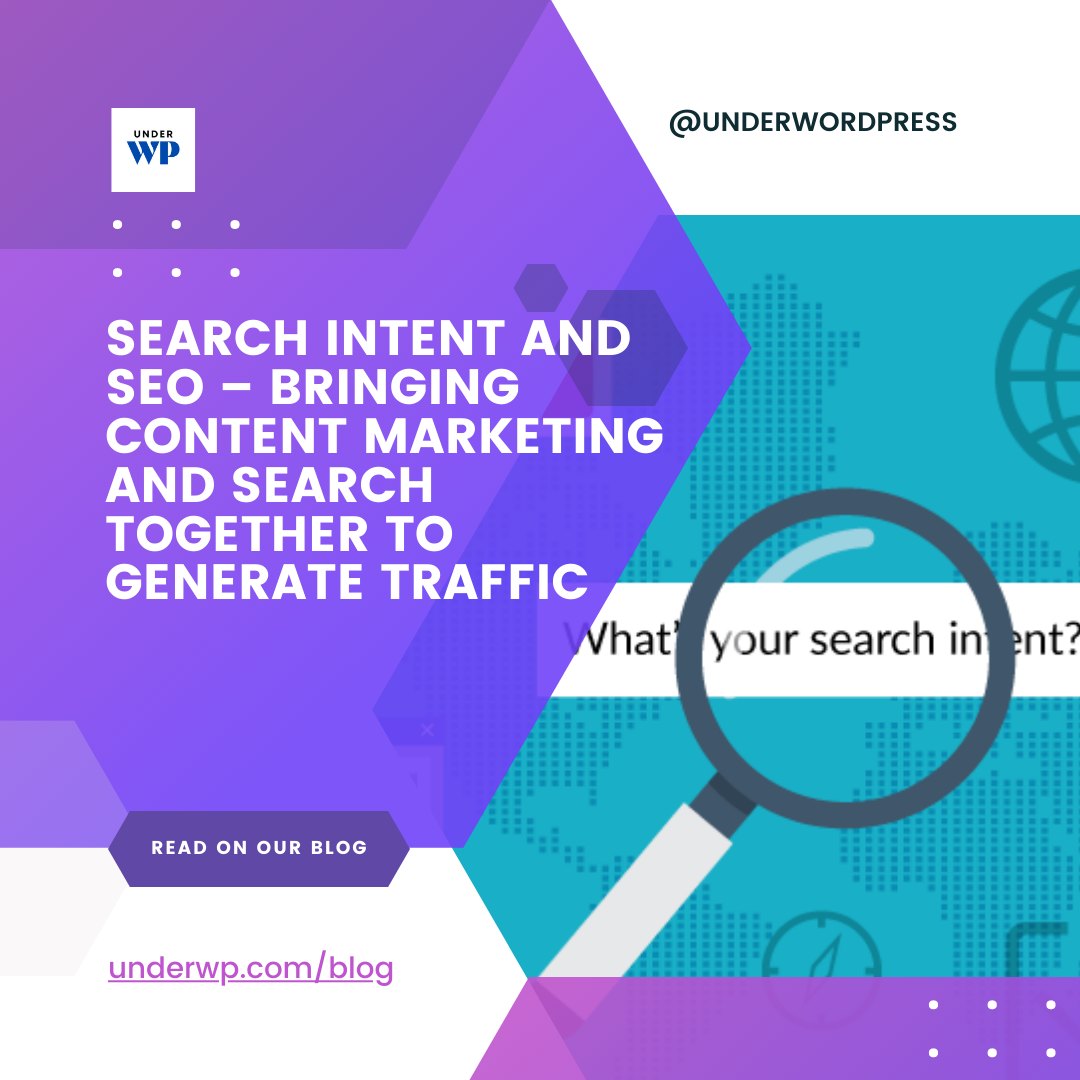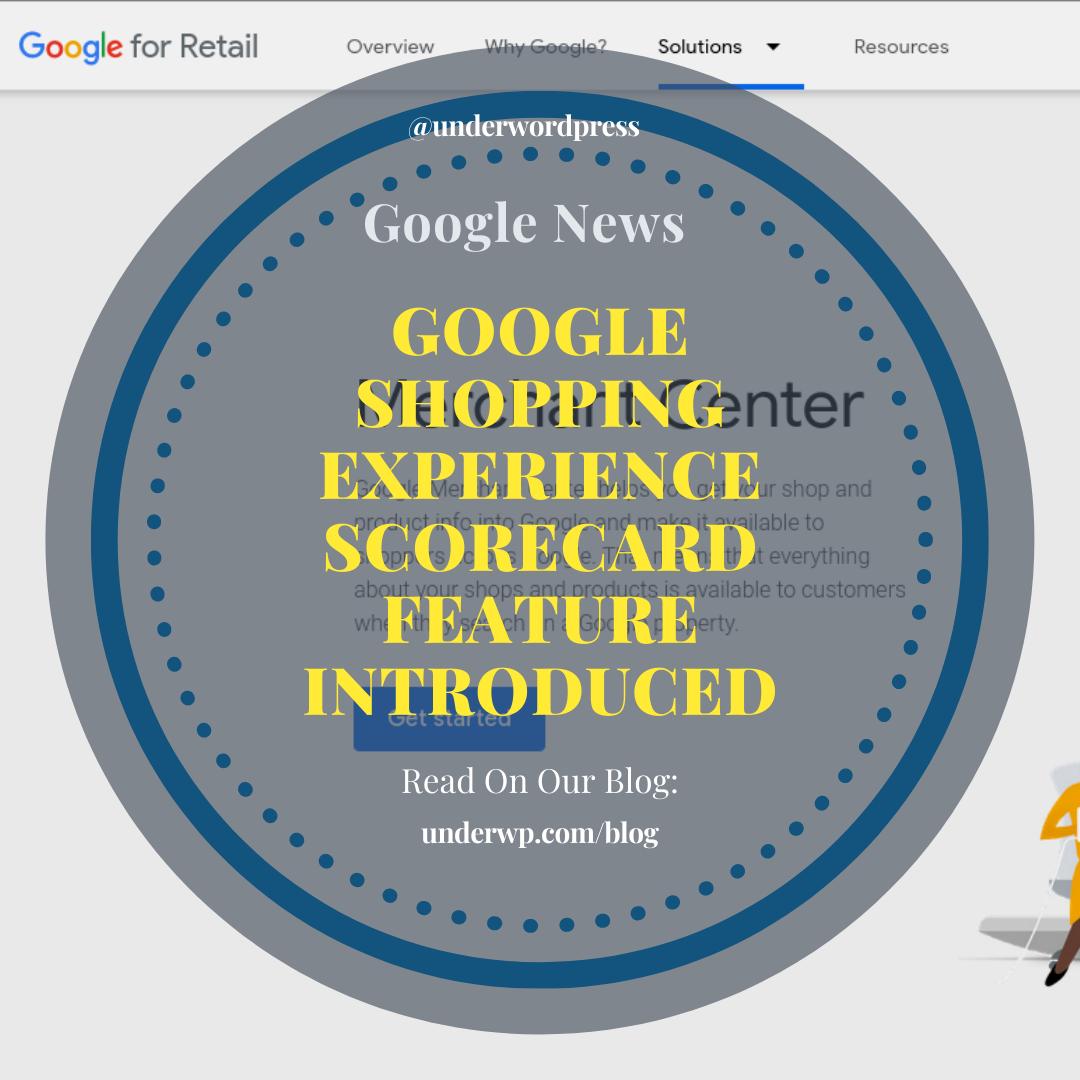Search engines are the gateway to finding information on the Internet.
In fact, a study by comScore in March 2011 found that for every two clicks generated through Google's AdWords program, one of those clicks is from a direct referral (i.e., clicking directly on an organic listing). This statistic has remained fairly constant over time.
The same can be said about other major players such as Yahoo! Search Marketing or Microsoft Bing Webmaster Tools.
What exactly does it mean to have “search intent”? It's a term that many Internet marketers are familiar with but may not fully understand.
How do you know if your content and product offerings are meeting the needs of those who come looking for them on Google or Bing, Yahoo! or any other major search engines?
Search Engine Optimization (SEO) is about understanding what people want from their searches so that we can provide relevant results.
If someone performs a search on Google, they're probably only interested in one thing – finding information on a specific topic. The searcher has set up an expectation around what kind of result he wants and will be disappointed when these expectations aren't met.
This means that a lot depends upon how well our sites structure the content to meet the user's need.
So why bother about search intent?
Because there's money to be made and reputation to protect.
As consumers become more sophisticated, companies must adapt their business models accordingly. In order to stay competitive, businesses should pay attention to market trends and make changes where necessary.
One area where this holds true is online marketing.
There are several ways that websites attract traffic — paid ads, social media advertising, email campaigns, blog posts — but some methods work better than others depending on the type of users searching for your site.
Paid ads like PPC (pay per click), display advertising such as Facebook Ads are expensive and require a large budget. But free tools like article writing, video creation, guest blogging, etc., can help increase organic reach and generate leads for your brand.
Knowing which techniques work best helps you focus your efforts while saving time and resources.
The importance of knowing something called “search intent” cannot be overstated.
Search engines now return hundreds of millions of links, being able to tell whether someone was actually looking to buy something rather than just browse through random categories is crucial.
For example, if you sell shoes, then using the phrase “shoes” might get you higher rankings for shoe-related products. On the contrary, using phrases like ”buy shoes” could potentially bring you a customer that already knows what they're after.
Knowing what people are really looking for will also give you the opportunity to compete against brands that offer similar items for less cost.
For instance, say you own a store selling designer jeans. You'd likely benefit from optimizing your website for keywords related to jeans and clothing.
However, you'll also need to optimize your landing page copy and overall design to appeal to the same audience. After all, people won't purchase anything unless they feel comfortable doing so.
In short, having a good idea of what people are specifically seeking should guide your decisions when designing new promotions and products. But how do you figure this out?
What do you mean by search intent in SEO?
Let's start with defining what search intent is.
According to Wikipedia, search intent refers to “the reasons behind a person performing a search” Essentially, it describes what people were hoping to accomplish via a search query.

To put it another way, it's the reason behind why someone searched for a particular item instead of going directly to its listing. By asking yourself what prompted people to perform a certain action, you can take advantage of their motivations to improve conversions and drive revenue.
For example, let's say I'm browsing eBay for used books. When I enter my query into the search bar, a list of potential matches appears along with recommended titles based upon my previous history.
Since the algorithm considers past behavior when recommending future purchases, it's clear that eBay understands that I'm looking for books, not electronics. Based upon this knowledge, eBay displays book recommendations above electronic ones.
From here, clicking on the link to Amazon brings me directly to the section containing books I am interested in buying.
Once again, eBay understood what I wanted and delivered the goods.
There are several things to consider when determining what search intent looks like.
First off, you need to identify two important factors:
1.) What did you end up purchasing?
2.) Where did you begin researching?
These questions define where visitors came from and what led them down a path toward making a decision.
If you run an eCommerce site, then determining search intent becomes easier once you recognize three primary drivers: the conversion path, the final destination, and the starting point.
Conversion paths describe a logical sequence of steps taken by buyers between entering checkout and completing payment.
A common scenario would include returning home from holiday shopping, deciding what gifts to buy, comparing prices, reading reviews, adding accessories/additional options, selecting shipping method, reviewing additional details, placing an order, checking order status, downloading receipt, and finally receiving the package.
Each step represents a possible outcome that ultimately determines success or failure.
Once you establish a conversion path, you can pinpoint the source of a visitor that didn't complete the process.
Why did they stop somewhere along the line? Did they decide to shop offline? Were they distracted by something unexpected during checkout? Perhaps they weren't satisfied with the price.
Whatever the case, analyzing unsuccessful transactions allows us to learn valuable lessons and adjust processes to ensure repeat sales.
Lastly, identifying the beginning of a conversion path gives us insight into what triggered shoppers to begin researching at all.
Users typically begin exploring a given category by typing generic queries into search engines. They quickly narrow down their choices by eliminating irrelevant hits until eventually zeroing in on a single title.
The moment of truth occurs when they click on a sponsored ad, bookmark a review, or simply visit the company website.
This is known as the conversion funnel and includes every step leading up to the actual transaction.
Identifying these points gives blog writers the ability to monitor traffic flow among different categories of the website. And then they can start developing content based on this deep search intent analysis.
Based upon this data, advertisers can also develop innovative strategies to boost profits. Some examples include offering discounts for early adopters, displaying discount codes at various stages, increasing inventory levels, and improving delivery times through ads on your website.
How do you thing the ad networks like Google Adsense, Ezoic, Mediavine, etc. pay you for advertisements?
Their analytics system is so detailed and deep that it suggests which content is performing well and which one serves the right search intent for a particular keyword for an advertiser.
With the right approach, search intent analytics can reveal patterns within a ad campaign and uncover areas where we can improve performance of our content.
Simply stated, it shows us what worked and what didn't.
Different types of search intent
Now that we've discussed general concepts surrounding search intent, it's worth taking a closer look at each type individually.

Below we discuss five categories based upon the nature of interaction and the expected outcomes: informational, transactional, navigational, promotional, and discovery.
1. Informational
When people conduct informational searches, they tend to prefer lists and articles.
People often utilize search engines to discover answers to basic inquiries or gain access to previously unknown facts. Therefore, they seek detailed explanations and opinions regarding topics.
Also referred to as “research,” this type of search activity generally produces low numbers of clicks. Examples include health issues, legal matters, and personal finance problems.
2. Transactional
Transactional searches involve actions aimed towards accomplishing a goal.
Most people engage in this sort of search activity to compare products and services and make informed decisions. Shopping carts, subscriptions, and reservations fall under this umbrella.
At its core, transacitonal searches produce high volumes of clicks. Consumers usually navigate away from pages that contain too much text and opt instead for simple, easy-to-read descriptions.
Advertisers rely heavily upon this demographic segment because they spend the least amount of time interacting with a site.
Furthermore, they are more willing to part with hard earned cash if they feel confident enough to try everything out without risk.
3. Navigational
Navigation searches refer to activities designed to locate information on a subject.
Usually, people choose to do this due to a lack of clarity associated with otherwise complex subjects. Thus, they look for guidance by following hyperlinks back and forth through multiple sources.
Generally speaking, navigational searches produce moderate amounts of traffic. Websites catering to this group enjoy medium popularity among regular visitors.
Local SEO is aimed towards the navigation searches. It helps shows the businesses in your area to show on top of Google search results.
4. Promotional
Promotional searches represent advertisements viewed by individuals who clicked on the corresponding advertisement itself.
Unlike navigational searches, promotional searches occur in real-time. Although they are considered direct response, they commonly consist of banner impressions or pop ups.
More importantly, however, they target a consumer base eager to acquire a desired product or service immediately. With this said, promotional searches carry a heavy price as these clicks tend to be costly.
5. Discovery
Discovery searches refer to requests for assistance related to solving problems.
Typically, people turn to search engines to find answers to technical difficulties or obtain advice pertaining to complicated situations.
Hence, they frequently employ Boolean operators and advanced syntax to filter results. We have written a blog about keyword resarch and using Google search operators to find low competition keywords.
Like navigation searches, discovery searches yield relatively small amounts of traffic. Nevertheless, it remains the fastest growing sector of searches performed on the Web.
How to determine search intent?
As mentioned earlier, determining search intent requires careful consideration. We recommend conducting a thorough analysis of website traffic to evaluate the effectiveness of current published content.
Here are four helpful tips to keep in mind when attempting to measure search intent.
1. Use a dedicated tracking tool
Tracking software offers precise statistics regarding visits to your site or client's website.
Utilizing third party solutions can prove problematic, especially when dealing with multiple clients.
Many providers charge extra fees for providing reports that break down traffic by demographics, geography, browser type, referral URL, and more.
Google Analytics is a free service offered by Google that generates detailed statistics about website activity in order to help website owners analyze their visitors and improve the user experience.
One of the most useful features it provides is the ability to view visitor traffic data over time, enabling you to see trends in how people are using your website.
It also allows you to compare traffic based on time selection and other parameters.
2. Using Modifiers to Find Search Intent
Modifiers can help you find what you're searching for faster by narrowing your results and providing context.
Modifiers are words that help you understand the user's intent.
For example, the word ‘buy' implies that the user has transactional intent—that is, he or she wants to buy something.
The word ‘shop' suggests that the user is searching for places to buy.
The word ‘cheap' implies that the user is after a bargain.
The word ‘best' makes it clear that the user is comparing two objects or things.
Finally, words like ‘vs', ‘comparison', ‘difference between', and so forth, imply that the user wants to compare two different objects.
These results suggest that questions are used for informational purposes, and that people mostly search for long-tail questions.
3. Ask yourself and Analyze
You need to ask yourself why someone would look up something specific.
For example, let's say I'm looking into buying some new shoes. I type “shoes” (or whatever) into my browser and start browsing through different shoe stores' websites until I finally decide upon which pair I'd like.
Now, after I've narrowed down my options, I enter another keyword phrase like “white tennis shoes”. The reason I used these two phrases was because there were only running-related sites listed under the first set of results.
Based off this scenario, it seems obvious that I wasn't really interested in purchasing shoes from general running shoes retailers. Instead, I wanted to buy white tennis sneakers specifically.
So now that I think about it, I should probably just purchase them directly from Amazon.com
Another important aspect of determining search intent is figuring out whether you're selling a particular item that falls within one niche market category, or if you're trying to appeal to multiple categories simultaneously.
If you're going to target multiple niches, then obviously you'll need to make sure that you're providing relevant information to each group separately, rather than lumping everything together.
You could end up losing potential customers if you try to cater too broadly.
Mapping your keywords

One thing that makes mapping search intent easier is if you already have a list of related terms that describe your products. These keywords allow you to sort your website according to the interests and preferences of its audience.
Keyword clustering is the best practice for mapping keywords. We will be writing about this topic soon on our blog. Do not forget to subscribe to UnderWP's newsletter to get the latest updates from our blog.
Once you have an idea of what words best represent your business, you can begin adding these words throughout your site and even incorporating them into articles and blog posts.
When building links, it's very helpful if you include your main keywords in anchor text fields whenever possible.
Anchors are hyperlinks placed inside HTML code that point back to certain web pages.
In order for search engines to locate your page, they must crawl through every link on the Webpage.
When linking internally, however, anchors enable search engines to identify and categorize your internal pages. By including your primary keywords in anchor text, you give search engines additional clues regarding where to send crawlers next.
Creating content based on search intent
Content marketing experts agree that creating great content requires understanding both your customer base and what they actually want.
Content creators should always keep in mind that consumers aren't necessarily searching for information on a particular topic – they usually want answers to questions they didn't realize they had yet.
This is especially true in industries where technology plays a large role. For instance, computer users typically perform searches for software programs and applications. On top of that, mobile phone owners go straight to apps. An important user behaviour to remember.
This is why it's extremely important to focus on making your content easy to read and navigate while maintaining clarity.
In addition to writing clear copy, you also need to consider the following tips:
Use descriptive titles
Titles are short descriptions that appear below each listing in search result pages. They're meant to draw attention to your website and answer basic user queries.
Descriptive titles are crucial because they provide a good overview of what visitors might expect once clicking your link.
Avoid generic title tags that sound ambiguous. Also avoid overusing punctuation marks in your titles.
Use simple language without big fancy adjectives.
Write concisely
Keep sentences short and sweet and eliminate unnecessary jargon.
A reader shouldn't feel overwhelmed reading long paragraphs filled with complex vocabulary.
Consider breaking longer texts into smaller chunks.
Don't forget to pay close attention to grammar and spelling.
Make sure that you proofread thoroughly.
Add callouts & bullets
Callouts add emphasis to points made in the body of an article.
Bullets separate small clusters of ideas.
While callouts should generally stay away from flashy colors and graphics, bullets are free to incorporate bolder designs or color schemes.
Keep images light
Images are useful tools for conveying messages and explaining concepts. However, they should never overwhelm readers.
Too many visuals can distract viewers and prevent them from focusing on the actual message.
Stick to 1-2 high resolution photos per webpage, unless necessary. If the content is big like this article, you can also add upto 5 photos.
Also we have an amazing blog post about Free Image Size Reduction Trick. Do check it out, you might find a smart little trick.
Make your URLs memorable
Most popular sites offer catchy domain names. But sometimes, having an interesting URL that stands out can boost traffic.
Take advantage of the opportunity to get creative with your URL strings. Using hyphens and numbers can generate unique URLs.
To ensure consistency across the board, however, stick to shorter URLs.
Optimize Content for Google

After you've created quality content, you need to optimize this content effectively.
Optimizing content involves improving visibility via various methods like social media integration, video submission, press releases, article submissions, etc., thereby increasing the chance of higher search engine rankings in organic listings.
If you're wondering how to optimie your content properly, here are 3 quick things that you can do to improve your ranking positions:
1. Create original content. Originality matters. Try to write your own articles or hire experienced writers to do so for you. Be wary of plagiarized content and duplicate content.
2. Focus on long tail keywords. Long tail keywords are phrases that are less competitive. Targeted traffic from long tail keywords generates larger profits for advertisers.
3. Incorporate semantic markup. Semantic markup refers to tagging data in HTML documents to facilitate proper indexation by search engines. Tag data includes the name of the file itself, along with the contents of the document. Tagging data enables search engines to recognize and categorize webpages correctly.
Creating Content Based On Search Intent For SEO
Creating content based on search intent means making sure your web copy appeals directly to searchers who have already expressed interest in your niche by using certain keywords.
The less targeted the traffic you get, the worse it is for your business.
You want people searching specifically for something related to what you sell so they can find exactly what they're looking for right now.
It's called “targeted” marketing because you know exactly where your customers are going — with their eyes open!
The following tips for creating content based on user search intent provide some basic guidelines for writing compelling copy
Researching Search Intents Is Critical Before Begin Publishing Content
Before you begin publishing new content, make sure you do proper market research and keyword research first. We have a blog post explaining in simple terms about keyword research.
There are plenty of tools out there designed to help you identify popular searches relating to your industry.
One good example of a free tool for determining popular topics is Wordtracker. Another option is BuzzSumo.
These sites allow you to check up-to-date buzz levels as well as average monthly views per visitor. This information helps you understand what kinds of things Internet surfers are actively interested in.
There are many other SEO tools that help you find latest trends in your niche and we have gathered them here: Best Free SEO Optimization Tools For Digital Marketing
These tools may seem like overkill since many businesses just need to publish simple blogs without spending thousands of dollars on professional marketing firms.
But even smaller companies could benefit greatly from doing regular keyword analysis before launching each piece of content.
Take time to think about whether your target audience would actually type queries along the lines of what you intend to write about.
Consider these questions:
- What terms are my competitors using in their headlines and body text?
- Do I really stand apart enough from others to draw attention to myself?
- Does the tone of my current content match the general mood of my prospective readership?
- Are the images on my content appealing enough?
- Have I optimized my navigation bar thoroughly?
All of these factors play major roles in drawing users' focus to particular areas of your site.
Once you've answered these questions honestly and determined what needs improvement, then you're ready to take action.
Don't wait until you see low conversion rates due to poor optimization, however. Start working on improving your website today!
Optimize content based on search intent
Creating content based on search intent is easier than optimizing an existing content on your website for a particular search intent.
When you are creating a new content, you are doing your research well and deciding the direction to go into before creating that content.
But optimizing an existing content will need you to understand the original intent of the content written and then modify it based on your analysis and findings of search intent for that particular content.
Below are three examples of optimizing your content based on search intent:
Type Of Content
Check the keywords of the content and analyze which type of search intent is it targeting among the 5 different types we wrote above.
If the content is targeting a Informational search intent but most of the searchers are looking for Navigational content for this keyword, then it is time to optimize this content accordingly.
This will also improve your Google rankings as Google has already annonced that it understands search intents now and knows how to rank pages according to it.
Read more about this update here https://underwp.com/how-google-mum-is-affecting-ranking-content-and-link-building/
Content Format
Once you know the type of content that your keyword searchers are looking for. It is time to check your competition.
Search on google for your target keyword and check the top 5 results for the kind of content format they are offering for their visitors.
Some keywords will require you to make comparison posts like reviews. Other kind of keywords will have PDF type of content.
This kind of competitive research is important to keep yourself on par with your competitors for search engine rankings.
Content Tone
Last but not the least important point to optimizing your content for search intent is the right content tone. I would also like to specify that this is also an important point when creating content based on search intent.
Generating content based on a keyword and search intent is easy. But setting a right tone for it will make you different from your competitors.
Adding the right content tone shows that you are an expert of your niche and you actually care about your vistors.
Different types of content tones are:
- Friendly
- Luxury
- Relaxed
- Professional
- Bold
- Adventurouus
- Witty
- Persuasive
- Empathetic
Based on your keword and search intent you can decide which type of content you want to show for your visitors.
It is now upto you to decide how you want to connect with your visitors based on the search intent they are coming to your website. With the right connection you will gain subscribers and repeated visitors. Also a good ranking signal for Google bots.
Final Words
The world has changed dramatically since people started searching online.
Nowadays, we use our smartphones to find information instead of using traditional desktop computers. We also tend to be more impatient when doing research than ever before because we want instant results.
However, this means that most companies don't take as much time to create valuable quality content. As such, they often miss out on getting their products seen at all.
This article will help explain how to figure out what kind of searcher you're targeting so that you can create better optimized content.
If you've read this whole guide, you must agree that producing high quality content with right search intent is essential for a healthy online business.
Now that you know how to go about doing it, you're ready to start implementing tactics that will bring you success year after year. Good luck!
Feel free to leave your thoughts and opinions in the comment section below. We love hearing from our readers!



